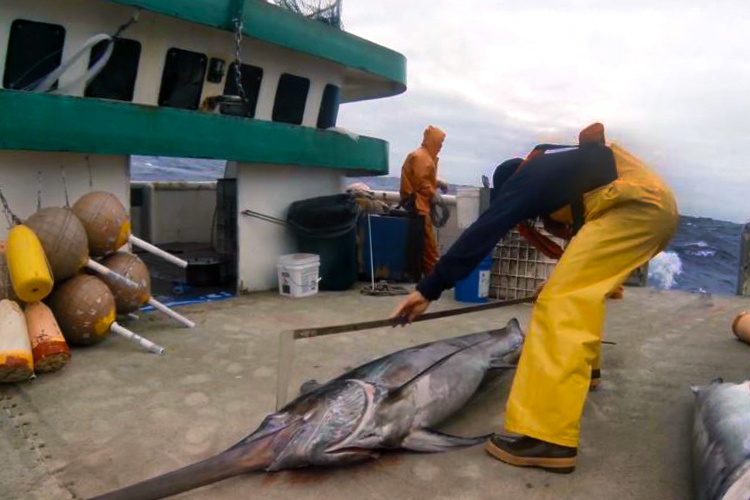Dissolving market conditions related to covid-19 are expected to stymie the economics of the West Coast swordfish longline fishery, if sea turtle bycatch limits don’t get to them first.
In August 2019, the Western Pacific Fishery Management Council elected to impose an annual hard cap limit of 16 leatherback turtle interactions on the fleet. Interactions equates to any form of entanglement, and the council noted that the majority of animals are released unharmed.
Though the council did not call for a hard cap limit on interactions with loggerhead turtles, based on evidence that the population appears to be rebuilding at an annual rate of about 2.4 percent, other stipulations apply. By then, the 2019 longline season had already come and gone.
The Hawaiian shallow-water longline fishery closed in late March after the fleet hit the 17th incident of accidental hooking of a turtle. As of March 18, this year the fleet had interactions with 13 loggerhead turtles of its 17-turtle cap, and had interactions with 2 of the 26 interactions they can have with leatherbacks.
In 2018, the swordfish season lasted until May, and the fleet had interactions with 6 leatherbacks and 33 loggerheads. This year’s swordfish harvest stood at 157.6 metric tons in early April. Average ex-vessel prices of $2.72 had been running synonymous with the same period last year.
Meanwhile, ex-vessel revenues of $944,908 for 2020 stand at less than half of the $2.53 million the fleet put in for the 2019 season, when landings tallied up to 423.1 metric tons.
Among other dynamics affecting product landed along the West Coast, regulations calling for armed guards aboard boats with crews of citizenship other than the United States have sent boats traditionally delivering to San Francisco off-loading their catches in Hawaii and elsewhere, according to Larry Collins, president of the San Francisco Community Fishing Association.
Even then, he said, the virus and its peripheral effects on business have disrupted the flow of product from boats to brokers to end markets.
“The entire supply chain is broke,” says Collins. “A lot of the Asian markets are closed; it’s really dried up.”







